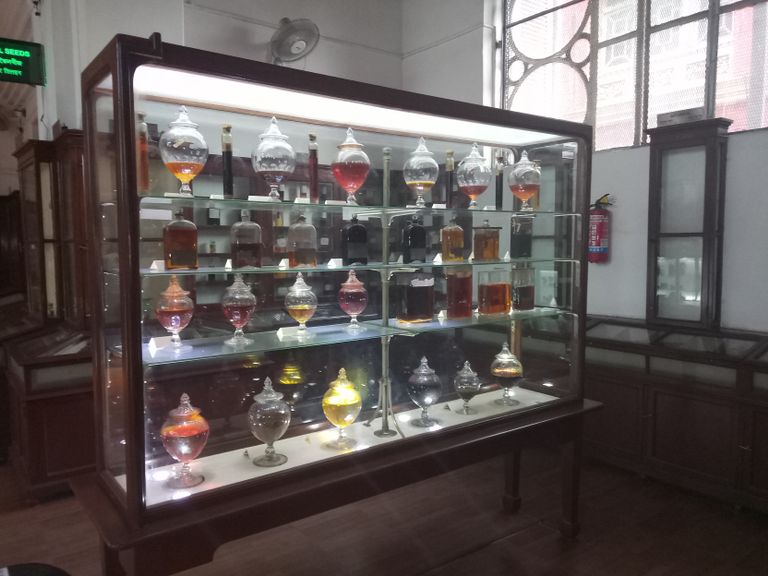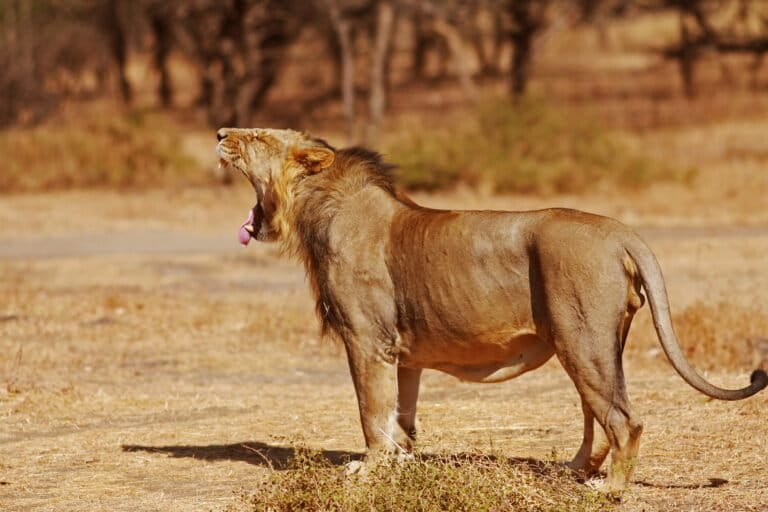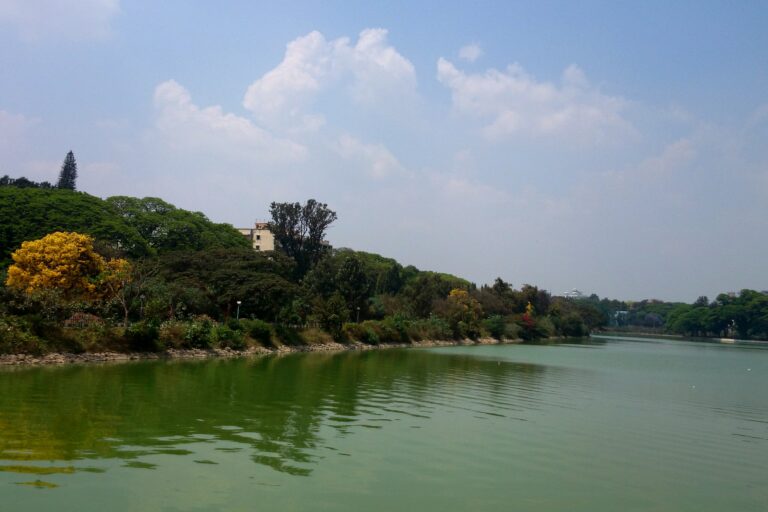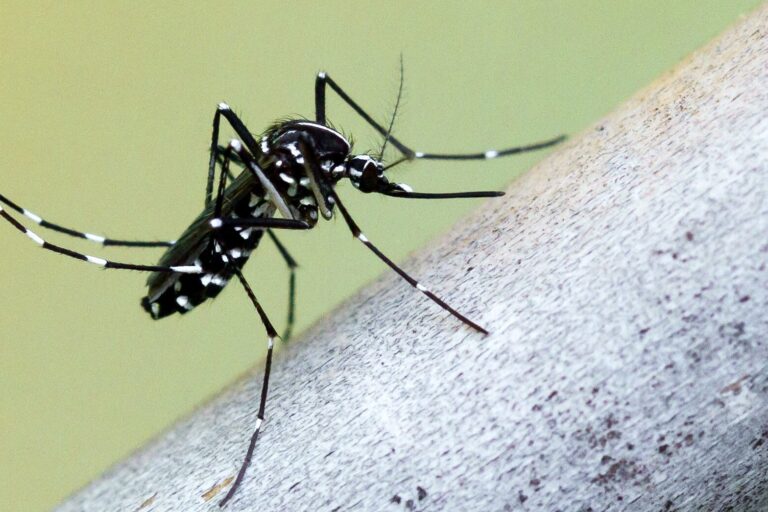- Revamped galleries and newly inaugurated exhibits of the Zoological Survey of India, Botanical Survey of India at the Indian Museum, the oldest and the largest multipurpose museum in the Asia-Pacific, highlight the power of museum collections to help answer society’s most pressing questions in the face of widespread environmental change.
- Over 10,000 exhibits, from the collections of Zoological Survey of India and Botanical Survey of India, are on display across four galleries at the 204-year old Indian Museum in Kolkata.
- The repositories serve as a resource for education and research for the public and also bear testimony to the long legacy of zoological and botanical research that began in the Indian subcontinent.
A skeleton of a common minke whale that was found stranded along the Myanmar coast in 1804 to a century-old quinine tablet-producing machine— fascinating exhibits are on display at Asia’s oldest museum, focussing on documenting natural history amid imperiled biodiversity.
Over 10,000 exhibits, from the collections of Zoological Survey of India and Botanical Survey of India, are on permanent display across four galleries at the 204-year old Indian Museum in Kolkata, the earliest and the largest multipurpose museum in the Asia-Pacific.
Spruced up “Mammals”, “Ecosystem”, “Invertebrate” and “Botanicals” galleries have added on to the museum’s natural history repertoire.
The repositories serve as a resource for education and research for the public and also bear testimony to the long legacy of zoological and botanical research that began in the Indian subcontinent about five centuries ago, officials said.
The BSI was established in 1890 with the objectives of exploring the plant resources of the country and identifying plant species with economic value. Its zoological counterpart, ZSI, came into being in 1916 to document the faunal diversity of India.
But the discovery and proper scientific documentation of Indian flora and fauna began much earlier with European explorers in the sixteenth century.
According to data provided by the organisations, the Portuguese were the first to recognise the utility of plants of India. Garcia de Orta, a Portuguese physician who came to India in 1534, studied plants from which drugs are obtained and other species of economic importance, growing them in his garden at Goa.

Indian fauna was documented through sample collections and hand-drawn illustrations. Later on, the explorers started preserving whole animal remains by using a technique called taxidermy.
“While doing so, a large part of those preserved animal forms were deposited in various European museums by British explorers. Some of these were also deposited in India, mainly in Asiatic Society and Indian Museum, Kolkata. When ZSI was set up in 1916, precious specimens, paintings and other natural history documents were transferred to ZSI for safe keeping,” said ZSI Director Kailash Chandra.
A peek into the history of India’s biodiversity
The renovated mammal gallery houses 314 specimens across 138 species, including exhibits from Africa and America.
“Whale and elephant skeletons are the major attraction in the mammal gallery. Some specimens such as the common minke whale skeleton are over 200 years old. We hope to generate more awareness on the importance of each element of biodiversity,” Chandra told Mongabay-India, adding that the mammal gallery dates back to 1914.
The “Ecosystem” gallery focuses on 10 biogeographic zones and their ecosystems while the invertebrate section takes one through biodiversity in hydrothermal vents, insect invasion in water, terrestrial invertebrates and much more. The zoological galleries were renovated at an expense of Rs. 170 million and Rs. 260 million was spent for revamping the botanical gallery.
The botanical gallery, earlier known as “The Economic Botany Gallery” was launched in 1901 by Sir George Watt showcasing 15,185 exhibits on plant-based economic products.

Spanning sections such as oil and oilseeds, dyes and tans, vegetable fibres, medicinal products and food products, the current avatar of the gallery highlights the “rich relationship” between plants and people through its 10,000 specimens, most of which are a century old.
The assemblage incorporates common food products (paddy, wheat, vegetables, fruits), drugs (crude drugs and their products, Cinchona and its products), industrial materials (paper, shola, silk, lacquer) and oils (essential and vegetable) among others.
Displays such as “Story of Paddy”, “Story of Indigo”, “Match Box Story” and “Story of Lac” let visitors peep into the stages encompassing growers to consumers and from field to factory, said AK Sahoo, scientist in-charge of the BSI’s Industrial Section at the Indian Museum.
“The focus of our collection is on wild plants. The exhibits underscore the importance of varied use of plants as also a sustainable way of life. In modern times, we have lost the connection with plants and it is necessary to reconnect with these elements in the wake of challenges to biodiversity,” Sahoo said.
Cinchona bark and quinine pills next to a century-old quinine tablet-producing machine elucidate the history of quinine, a component of the bark of the cinchona tree, that was used to treat malaria from as early as the 1600s.

Another draw is the bark of the bark cloth tree (Antiaris toxicaria) that yielded rough clothing material in ancient times, said Sahoo.
Rare holdings such as those by Scottish physician John Forbes Watson on textile fabrics of India are also on display. As director of the India Museum in London in 1858, his job was to identify and catalogue Indian products for the Secretary of State for India. In fact, museum officials said textile and fashion designers regularly refer to the collections on dyes and tans.
Bottles and vials of crude and refined opium, including those from the Ghazipur opium factory (India’s biggest and oldest legal opium factory) and paraphernalia associated with opium extraction and seven illustrative volumes of “Flora of India” by James Dalton Hooker are among other items.

Digitisation for furthering research efforts
Next on the agenda is digitisation of collections and making digital collections accessible for collaborative research.
Earlier this year the BSI inked a deal with Natural History Museum (NHM), London for cooperation in the field of genetic/taxonomic studies, research and training, conservation in India, including species and habitat conservation assessments.
The Natural History Museum holds many historical collections and images of these shared with botanists worldwide will enable collaborative research into the Indian flora and its changes through time, a spokesperson said.
“Recent reciprocal visits between staff from BSI and NHM have highlighted the importance of making digital collections available for collaborative research. BSI staff members came to the NHM for four months in late 2017 and imaged more than 20,000 herbarium (dried plant) collections from India held in the collections in London – these will be used in collaborative research into the rich Indian flora,” the spokesperson told Mongabay-India.
The NHM spokesperson highlighted that museum collections are essential for understanding where and when organisms occurred, allowing us to study changes in life’s diversity through time.
“Our memorandum of understanding with BSI will enable new research and new collaborations that will bring the power of museum collections to help answer society’s most pressing questions in the face of widespread environmental change,” the spokesperson added.














